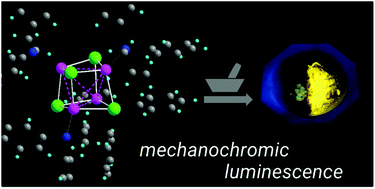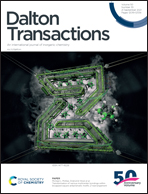Molecular copper iodide clusters: a distinguishing family of mechanochromic luminescent compounds
Abstract
Mechanochromic luminescent materials displaying switchable luminescence properties in response to external mechanical force are currently attracting wide interest because of their multiple potential applications. In the growing number of mechanochromic luminescent compounds, mechanochromic complexes based on copper present appealing features with a large variety of mechanochromic properties and economical advantages over other metals. Among Cu-based compounds, molecular copper iodide clusters of cubane geometry with formula [Cu4I4L4] (L = organic ligand) stand out. Indeed, they can exhibit multiple luminescent stimuli-responsive properties, being particularly suitable for the development of multifunctional photoactive systems. This perspective describes the survey of these mechanochromic luminescent cubane copper iodide clusters. Based on our investigations, their mechanochromic luminescence properties are presented along with the study of the underlying mechanism. Establishment of structure–property relationships supported by various characterization techniques and associated with theoretical investigations permits gaining insights into the mechanism at play. Studies of other researcher groups are also described and illustrate the interest shown by these mechanochromic compounds. Mechanically responsive films are reported, demonstrating their potential use in a range of applications of such copper-based stimuli-responsive materials. Current challenges faced by the development of technological applications are finally outlined.

- This article is part of the themed collection: 2021 Frontier and Perspective articles


 Please wait while we load your content...
Please wait while we load your content...